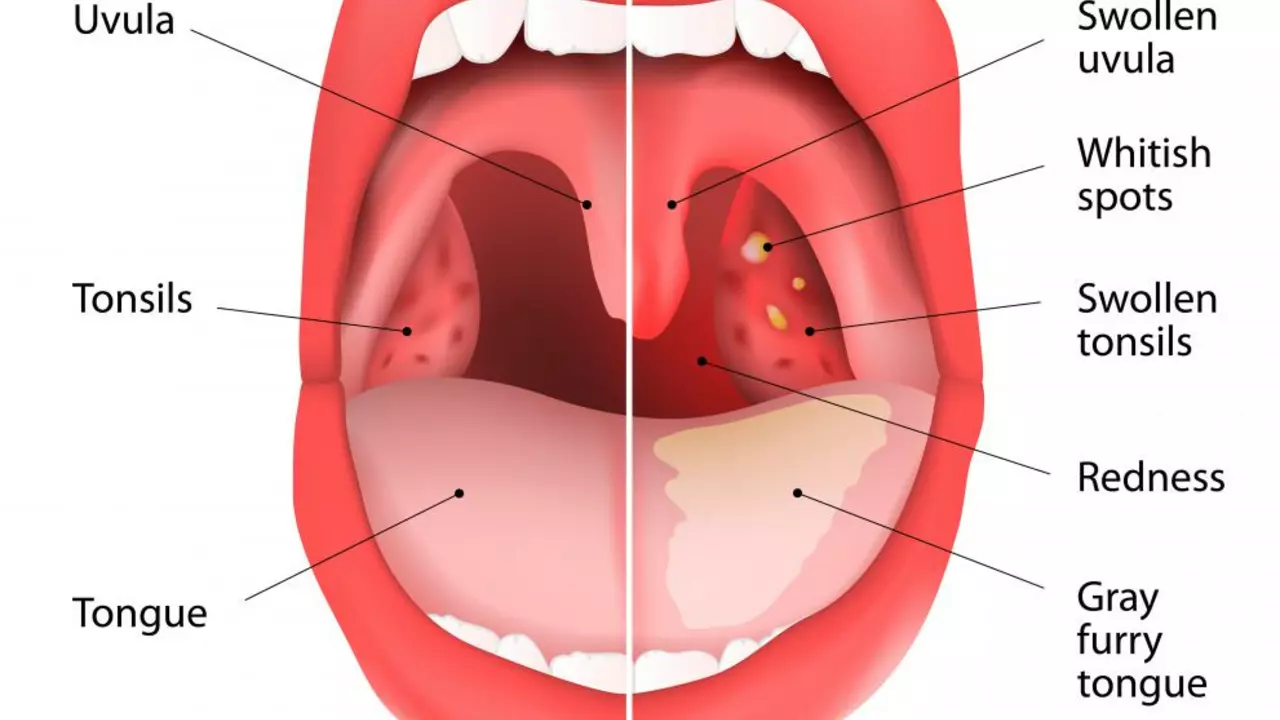Tonsillitis: how to spot it and what to do
Sore throat, swollen tonsils, white spots—those are common signs of tonsillitis. It’s an infection or inflammation of the tonsils behind your throat. Most cases are viral and get better with home care, but some are caused by bacteria (often group A strep) and need antibiotics. Below I’ll walk you through how to tell the difference, quick at-home fixes, and when to contact a doctor.
How to tell if it’s tonsillitis
Typical symptoms include a sudden sore throat, pain when swallowing, fever, red or swollen tonsils, and white or yellow patches on the tonsils. You might also have swollen neck lymph nodes, ear pain, bad breath, or a hoarse voice. If you’re very tired with swollen tonsils and high fever, think about mononucleosis (EBV) as another cause.
Doctors use a rapid strep test or throat culture to check for group A strep. That matters because strep needs antibiotics to prevent complications like rheumatic fever. If the test is negative and symptoms look viral, antibiotics won’t help.
Treatment, home care, and when to see a doctor
For viral tonsillitis: rest, drink plenty of fluids, use a humidifier, and take pain relievers like acetaminophen or ibuprofen as directed. Gargling warm salt water several times a day and sucking on lozenges (for adults) or using honey for kids over 1 year can ease throat pain. Cold drinks or ice pops often help too.
For bacterial (strep) tonsillitis: a short course of antibiotics is usually prescribed—penicillin or amoxicillin are common choices. Finish the full prescription even if you feel better after a day or two. If pain or swelling is extreme, a single steroid dose (given by a doctor) can reduce throat swelling quickly.
Complications to watch for: peritonsillar abscess (a painful pus pocket beside a tonsil), trouble breathing, drooling, severe neck stiffness, or dehydration. These need urgent medical care. Also, repeated severe tonsillitis or problems like obstructive sleep apnea may mean your doctor suggests a tonsillectomy. Typical criteria include several documented infections in a year or ongoing sleep blockage from enlarged tonsils.
Prevention is simple: wash hands often, avoid sharing utensils, stay home when sick, and get your yearly flu shot. If someone in the house has strep, treat them and wash shared items to reduce spread.
If your throat pain is severe, you can’t breathe or swallow, or symptoms don’t improve after 48–72 hours, call your health provider. Quick testing and the right treatment will usually get you back to normal fast.
Can Tonsillitis Cause Bad Breath? What You Need to Know
In my latest research, I've found that tonsillitis can indeed cause bad breath. The reason lies in the bacteria or viruses that infect the tonsils, leading to inflammation and bad odor. It's also worth noting that the condition can cause other symptoms such as a sore throat and difficulty swallowing. So, if you've noticed a sudden change in your breath coupled with these symptoms, it might be time to see a doctor. Remember, early detection and treatment can help manage the situation effectively.
- View More
- 15

